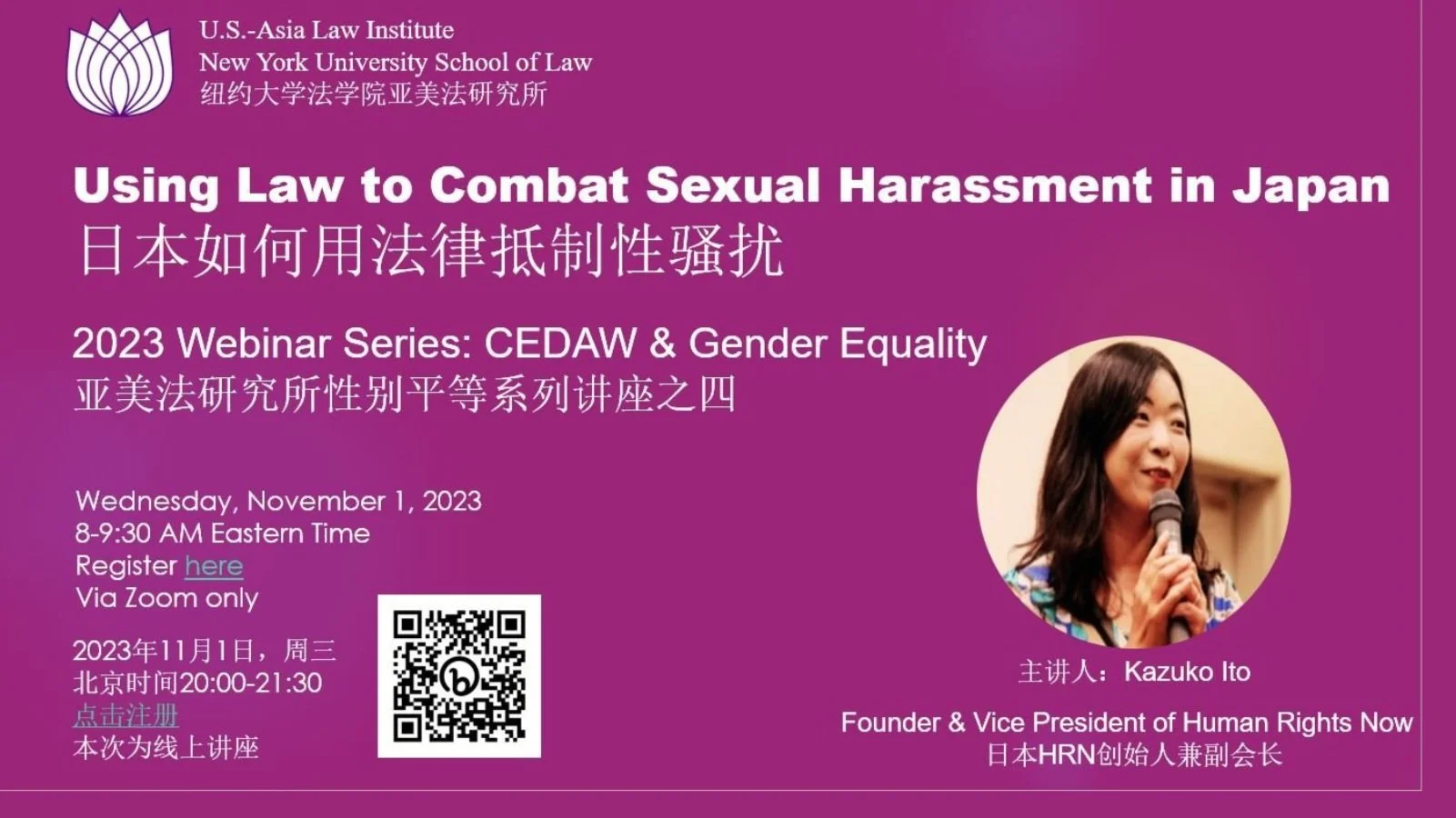Women’s Rights in East Asia
Undeniable Progress, Surprising Challenges
The progress of women’s rights in East Asia, as elsewhere, has been marked by two steps forward and one step back. Constitutions and laws provide for legal equality in most respects but political, economic, and social hierarchies remain strikingly gendered. The global #MeToo movement has brought some victories, as in Taiwan where the legislature met in special session in August 2023 to amend laws that address sexual harassment in workplaces, schools, and other settings. Japan, famously a laggard among the richest economies for its gender gap, finally overhauled its sex crimes laws in June 2023 to raise the age of sexual consent from 13 to 16 and redefine rape as “non-consensual sexual intercourse.” Yet in South Korea, which led the region in 2012 by electing a woman head of state (albeit one who was also the daughter of a dictator), the presidency was narrowly won one decade later by an anti-#MeToo candidate who blamed the country’s low birthrate on feminism. In China, authorities rarely pursue sexual harassment claims in law but often censor them on social media.
At the U.S.-Asia Law Institute, we wanted to better understand what was going on, including the role of international law and social contagion in both promoting women’s rights and sparking a backlash. Here are some of the fruits of our exploration: webinars, a conference, and published essays.
2023 Webinar Series: CEDAW and Gender Equality
2023 Webinar Series: CEDAW & Gender Equality
In 2023, the U.S.-Asia Law Institute held a series of webinars on the Convention on the Elimination of All Forms of Discrimination Against Women (CEDAW) and its impact on women’s rights and gender equality in East Asia. Speakers discussed some lesser-known aspects of CEDAW jurisprudence, compared its implementation in selected jurisdictions, and explained the strategies being used by women’s rights advocates as they face an unexpected backlash led by populist politicians. We offered simultaneous English-Chinese, Chinese-English translation, and provided recordings in both languages.
2022 Conference: Promoting Women’s Rights in Asia & Globally
The U.S.-Asia Law Institute’s Timothy A. Gelatt Dialogue on the Rule of Law in East Asia in October 2022 focused on the state of women’s rights protection on both sides of the Pacific and the interplay between domestic and international law and norms.
The conference agenda and recordings can be found here.
Introduction and Panel 1: Whither Reproductive Rights?
Panel 2: The Role of International Laws and Norms
Panel 3: Asian Feminism and the Transnational Women’s Movement
USALI Perspective Essays
USALI Perspectives are online essays about developments in domestic, comparative, and international law in Asia that have implications beyond the region. These recent essays discuss CEDAW’s impact and prospects in East Asia, gender-based violence in China, and recent amendments to China’s Law on the Protection of Women’s Rights and Interests.
Feminization of Poverty and Women’s Leadership: Looking Ahead to CSW 2024
By Rangita de Silva de Alwis
The theme of this year’s annual meeting of the UN Commission on the Status of Women (CSW) is “accelerating the achievement of gender equality and the empowerment of all women and girls by addressing poverty and strengthening institutions and financing with a gender perspective.” Poverty has historically been measured in monetary terms, such as wage disparity and GDP per capita. Access to resources, opportunity, and a role in decision-making should be part of the poverty calculus as well. During its meeting from March 11-22, therefore, CSW must focus not only on increasing wealth, but also on increasing opportunity and capabilities for women.
CEDAW’s Impact in East Asia
By Carole J. Petersen
The Convention on the Elimination of All Forms of Discrimination against Women has been almost universally ratified, but there is a vigorous debate about its real-life impact in promoting gender equality. Carole J. Petersen assesses its impact in East Asia, a region that continues to be affected by Confucianism and entrenched gender hierarchies. She identifies three factors that seem to enhance the treaty’s impact: the extent to which the government wants to implement the treaty or be seen to do so, the extent to which the judiciary looks to CEDAW for guidance when interpreting and applying domestic laws, and the extent to which civil society can engage in the periodic review process and promote compliance with the treaty.
In Part I, the author analyzes the impact of CEDAW in Japan, South Korea, and mainland China.
In Part II, the author examines the impact in Hong Kong and Taiwan.
The Future of CEDAW
By Rangita de Silva de Alwis
Rangita de Silva de Alwis, who joined the Committee on the Elimination of Discrimination against Women in January 2023, shares her vision for future development of the jurisprudence of the Convention on the Elimination of All Forms of Discrimination against Women.
The Long Road to Ending Gendered Violence in China
By Brian Wong
In June 2022, a group of men violently attacked four women at a barbecue restaurant in Tangshan, China, after one of the women rejected a pickup attempt. Video of the attack went viral. What happened next revealed the problem at the heart of gendered violence in China: instead of acknowledging the role gender played in the attack, authorities treated it as a case of gang criminality.
Assessing Proposed Changes to China’s Women’s Protection Law
By Liu Xiaonan
At the end of 2021 China’s legislature released proposed revisions to the Law on the Protection of Women’s Rights and Interests for public comment. The public response was huge, illustrating the extent to which women's rights has become a focal concern for the whole society in recent years.
In Part I, the author presents highlights of the draft revision.
In Part II, the author identifies shortcomings in the draft and makes suggestions for improvement.












